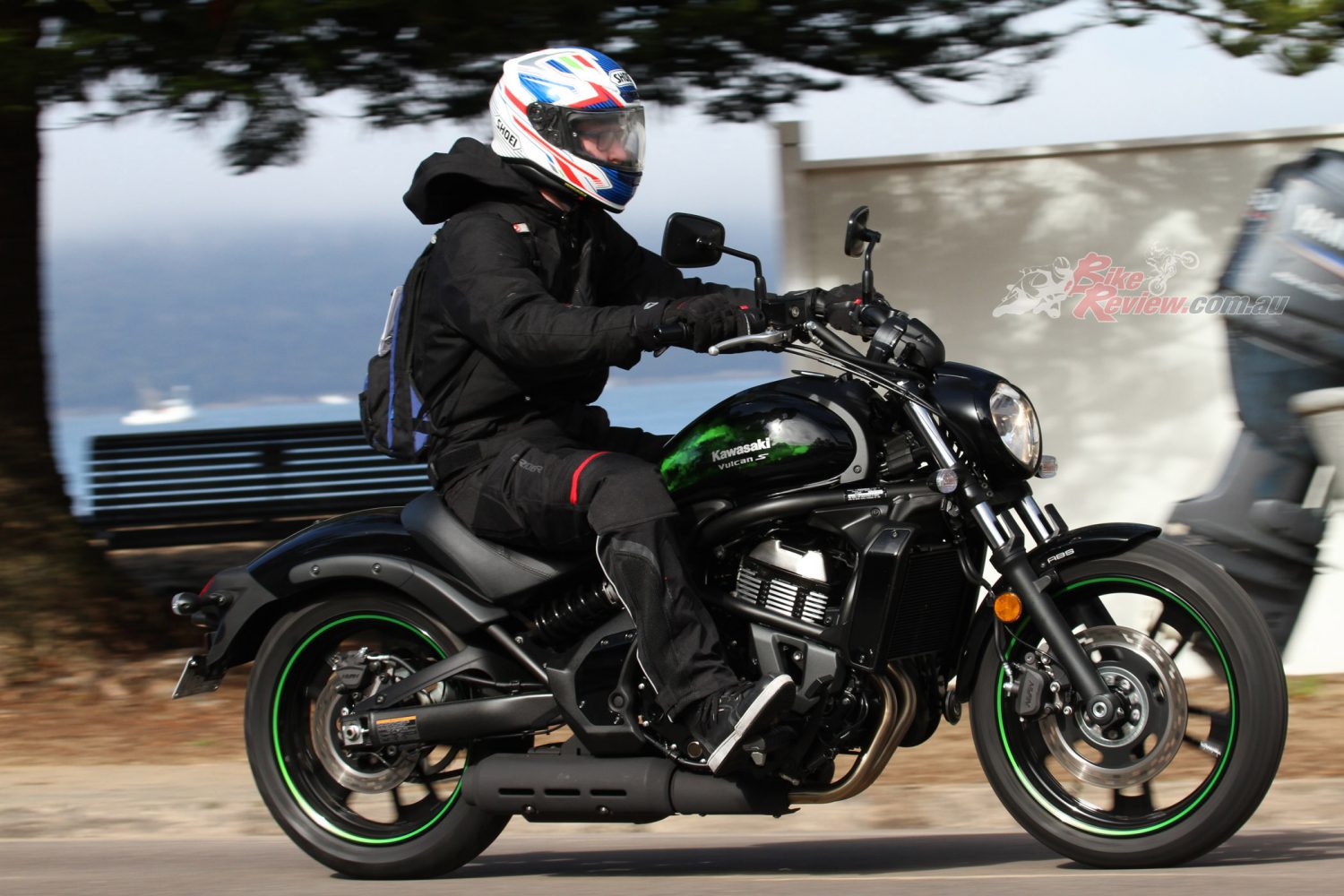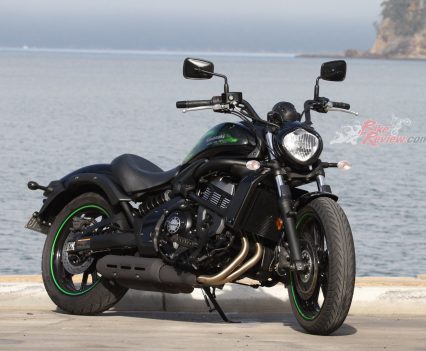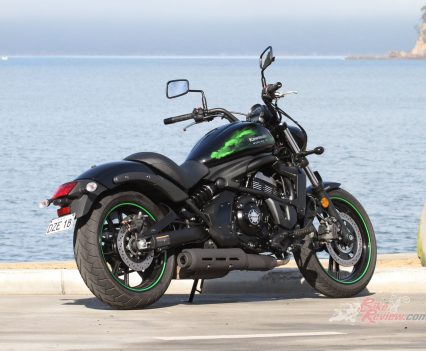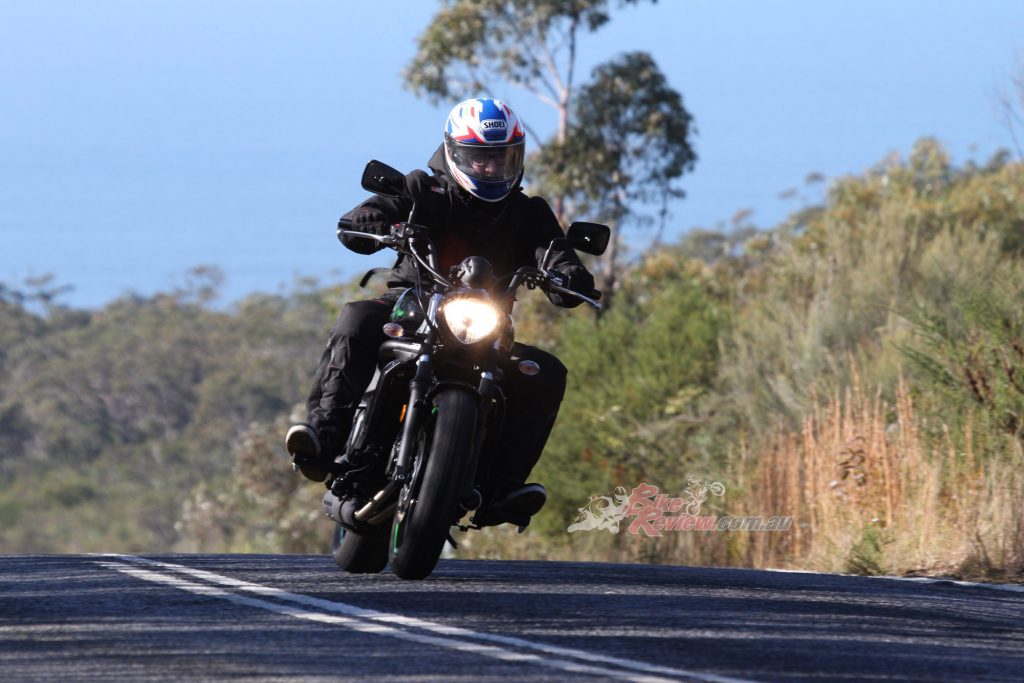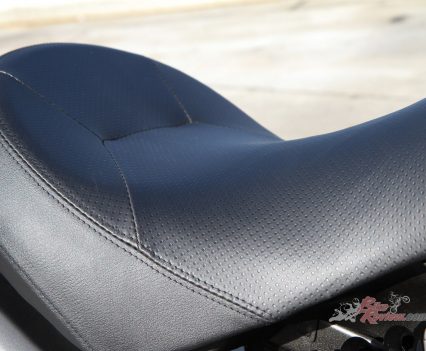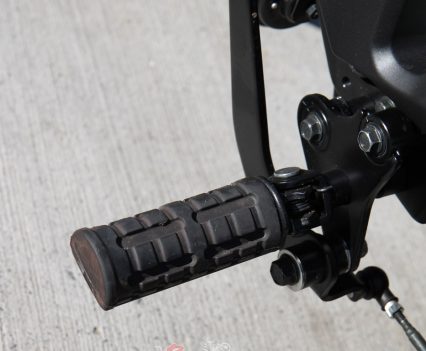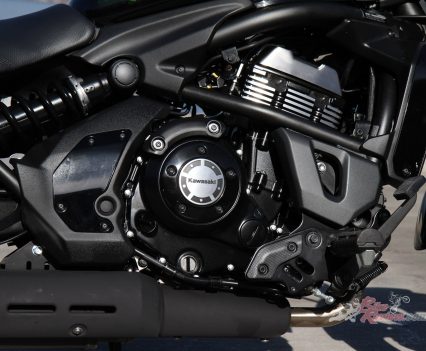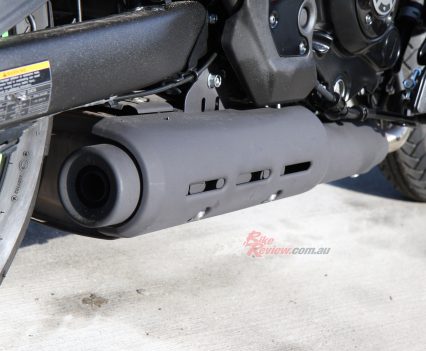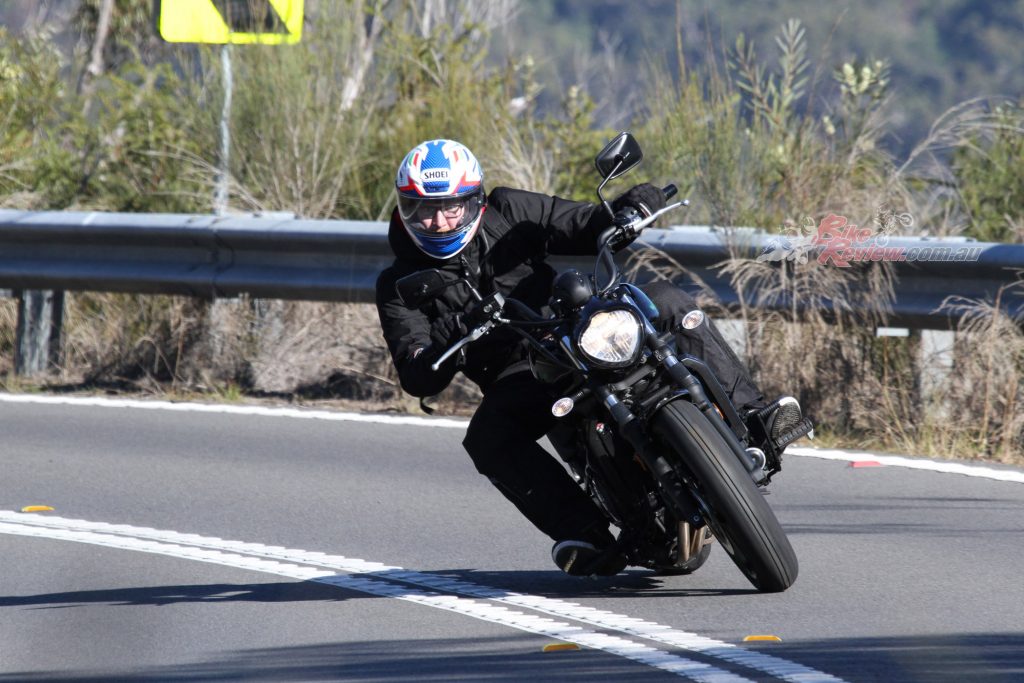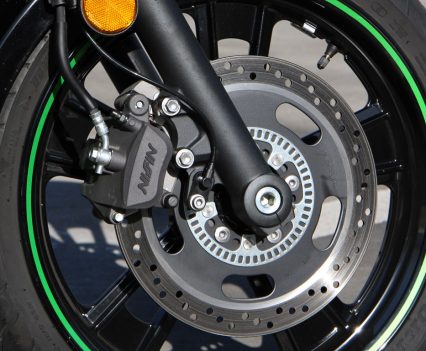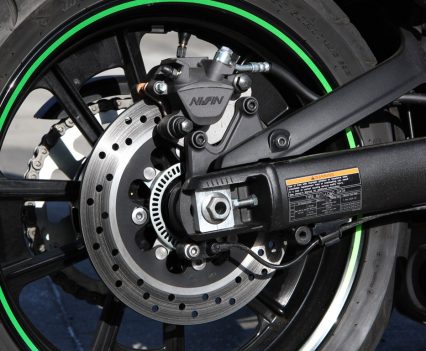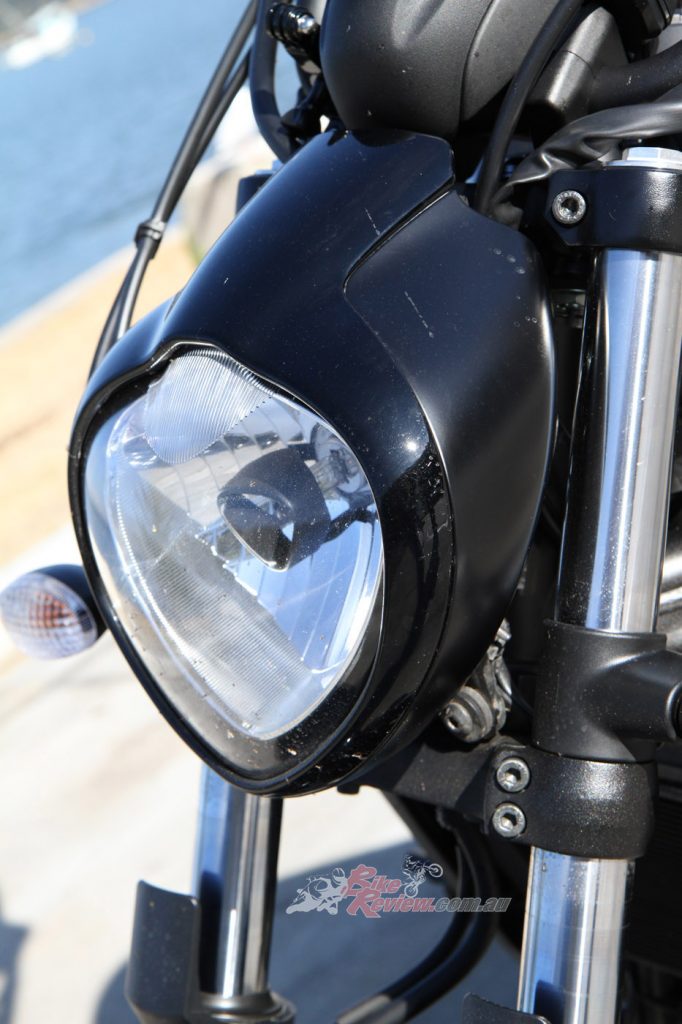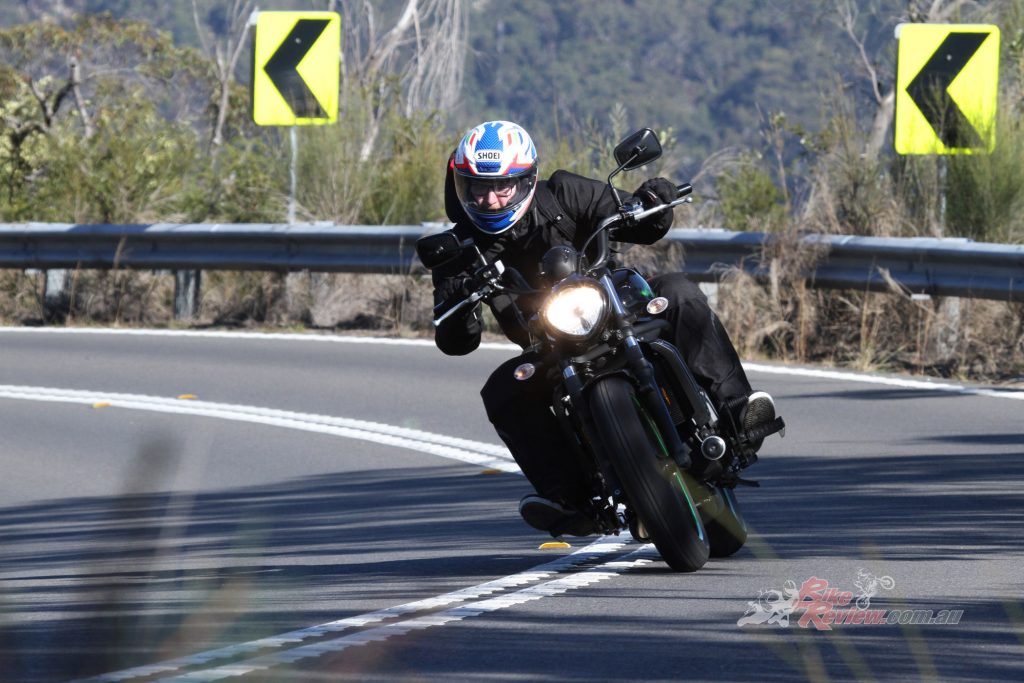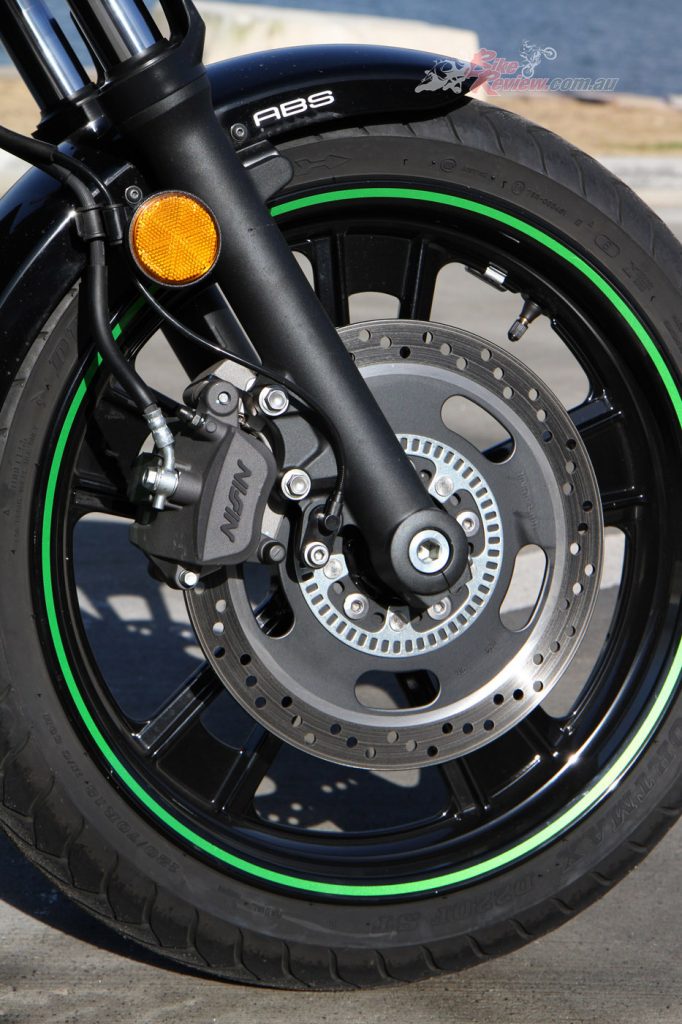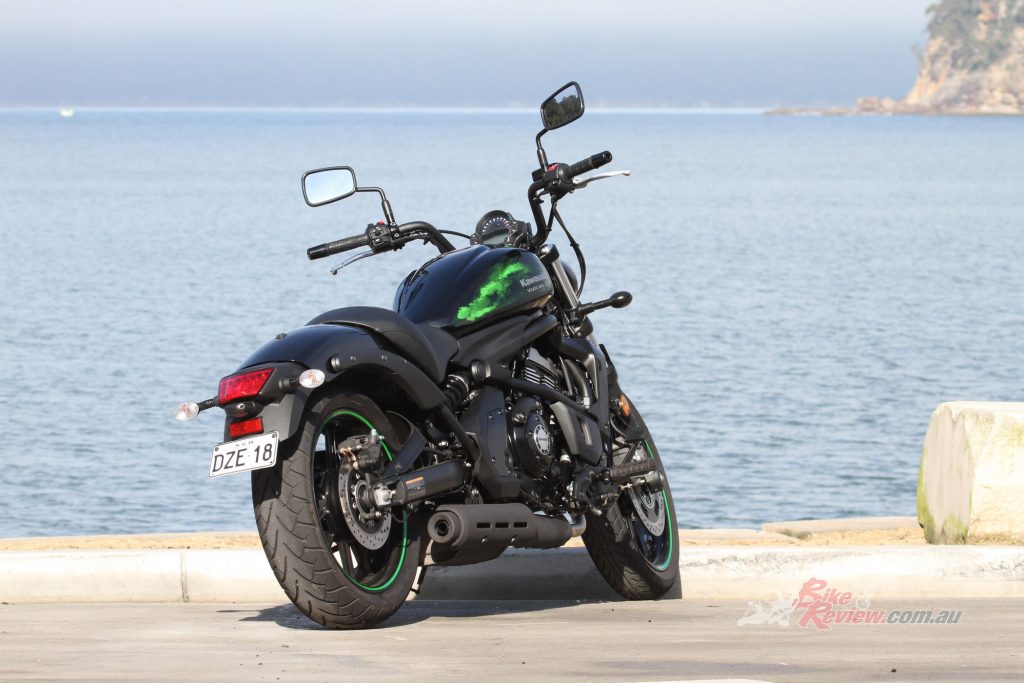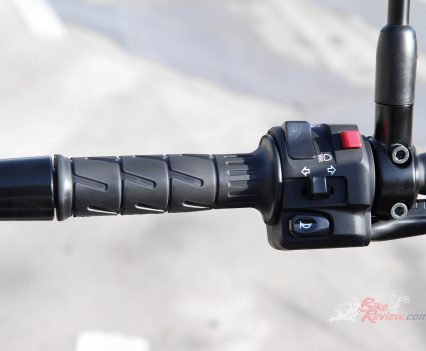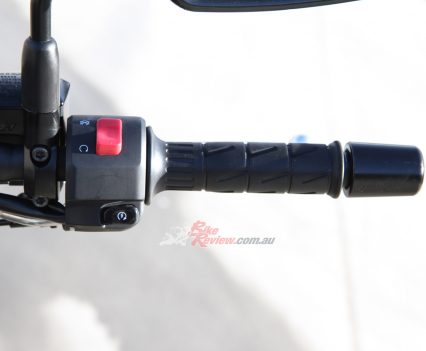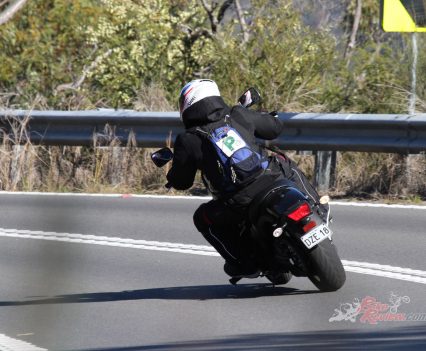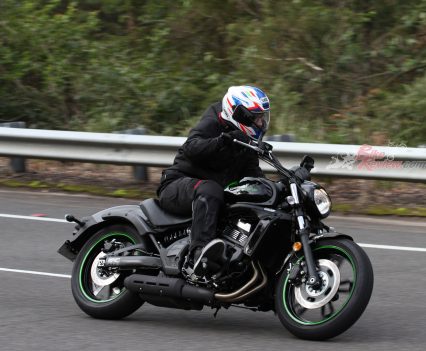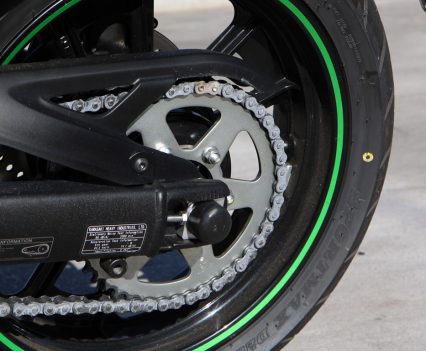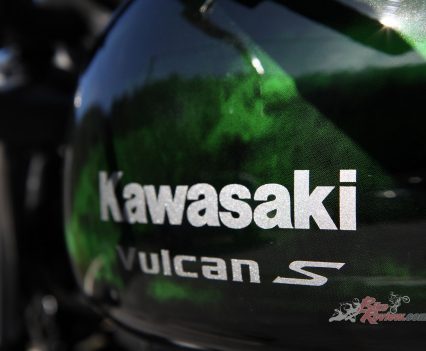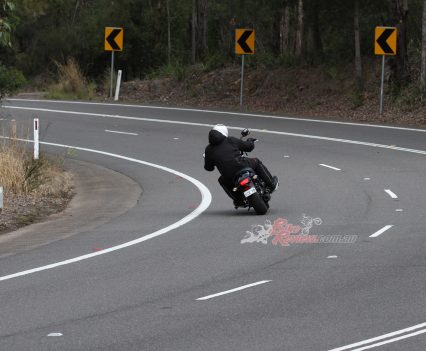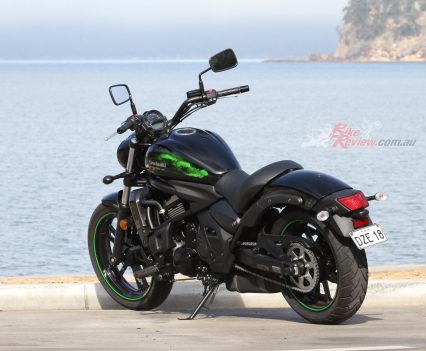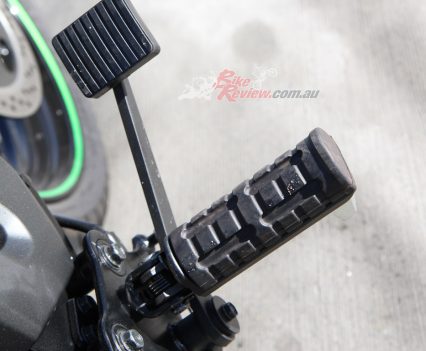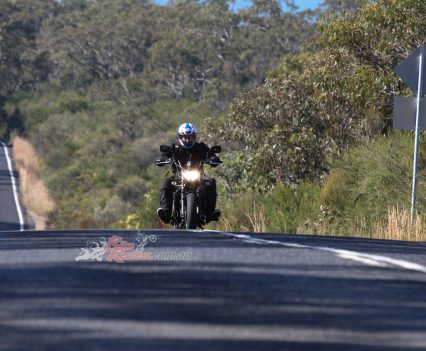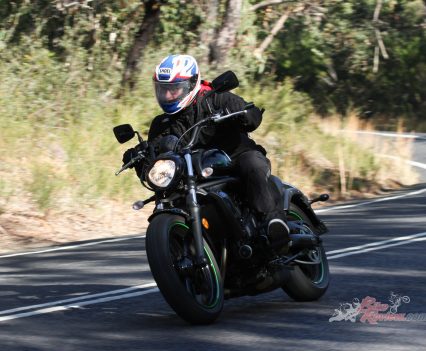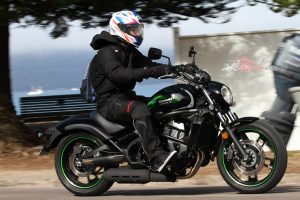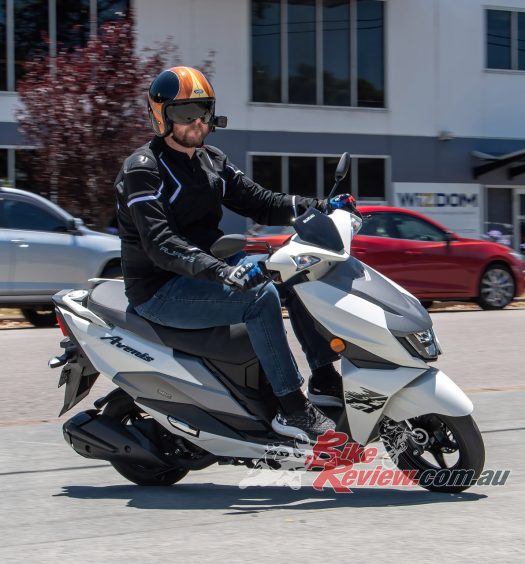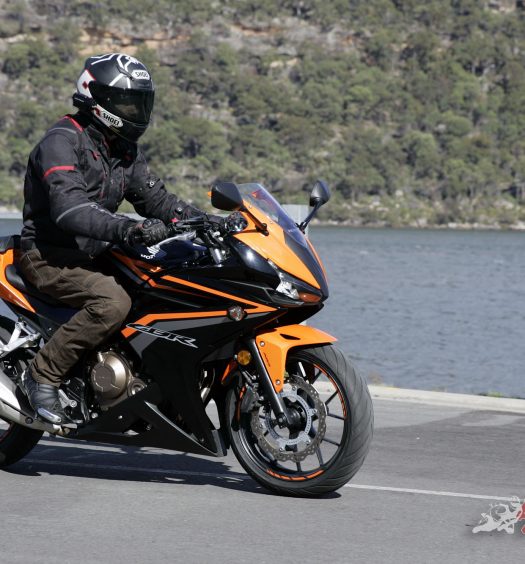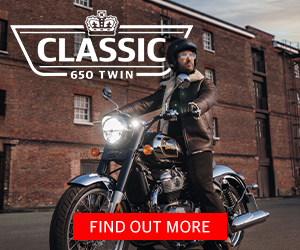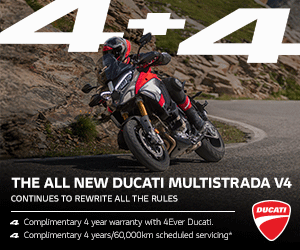Are you a new rider looking for a middleweight cruiser? The 2020 Vulcan S SE is a blend of top performance with cruiser comfort, suitable for all! Words: Jack Maguire Pics: Heather Ware
Never in my life did I think that I would enjoy the styling or ride of a ‘cruiser’. To be honest, I prefer the taste of crotch rockets and the like much more than cruisers – but what if you grabbed a cruiser chassis, and then shoved a high-revving, torquey motor in?
Well I introduce you to the 2020 Kawasaki Vulcan S SE, a motorcycle with the looks, comfort and ‘status’ of a cruiser but with surprisingly aggressive performance. It’s a cool concept, that’s for sure, but what is the real deal like? Is it as cool as it sounds?
It looks like a cruiser that’s for sure; long wheelbase, big old ‘bars, low seat height and ground clearance, ‘pegs out the front and it’s even got a sick decal on the tank which is just quintessential cruiser styling really. But, it has a sleek and really aggressive looking headlight which I feel transforms the look and sets it apart from the crowd. It sits on big five-spoke wheels, 18inch and the front and 17inch at the back, with a rear fender that hugs the rear tyre as close as possible.
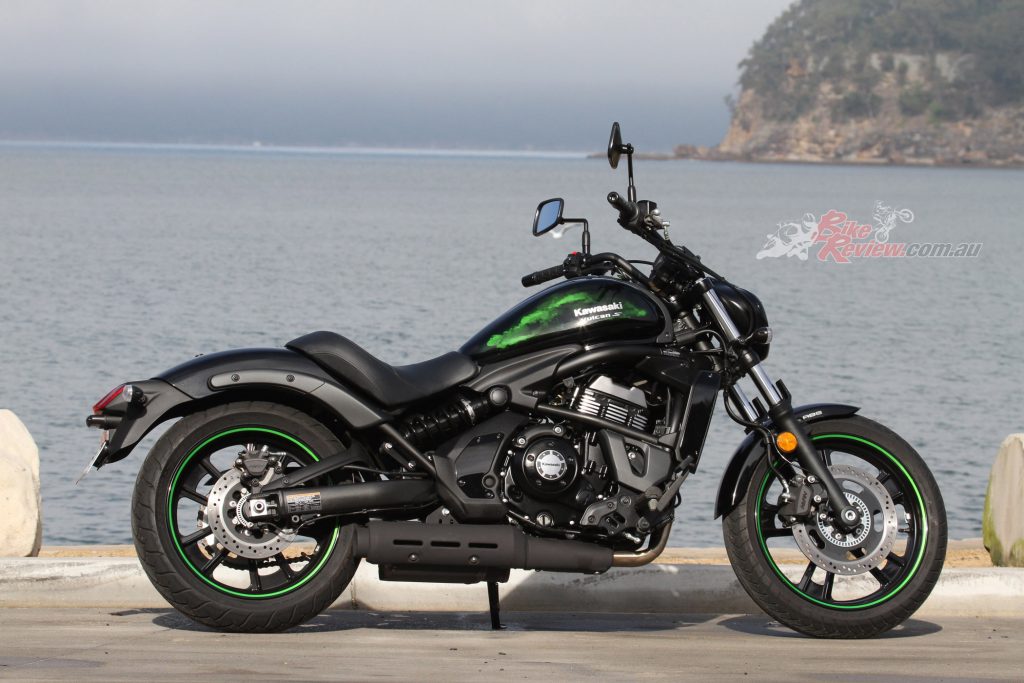
The 2020 Vulcan S SE offers great adjustability to suit the needs of riders of all different shapes and sizes.
But there isn’t much of a crowd here to compete in – the Vulcan S has a few competitors, Suzuki’s Boulevard S40, Honda’s CMX500, the Yamaha XVS650A and the Benelli 502C. So if you’re looking for a larger displacement cruiser as a learner, the Vulcan S is one of a number of options.
Riders can expect the usual cruiser ergonomics from the Vulcan S SE – relaxed and easy, feet out front and hands up high. Coming from riding mainly sportsbikes and nakeds, the ‘peg placement took some getting used to and I found myself constantly thinking the pegs were below me.
But after a few rides, I found myself comfortable and the riding experience is phenomenal in terms of cruising comfort. It’s just like putting your feet on the seats on NSW trains, not that I would ever do anything that irresponsible or illegal.
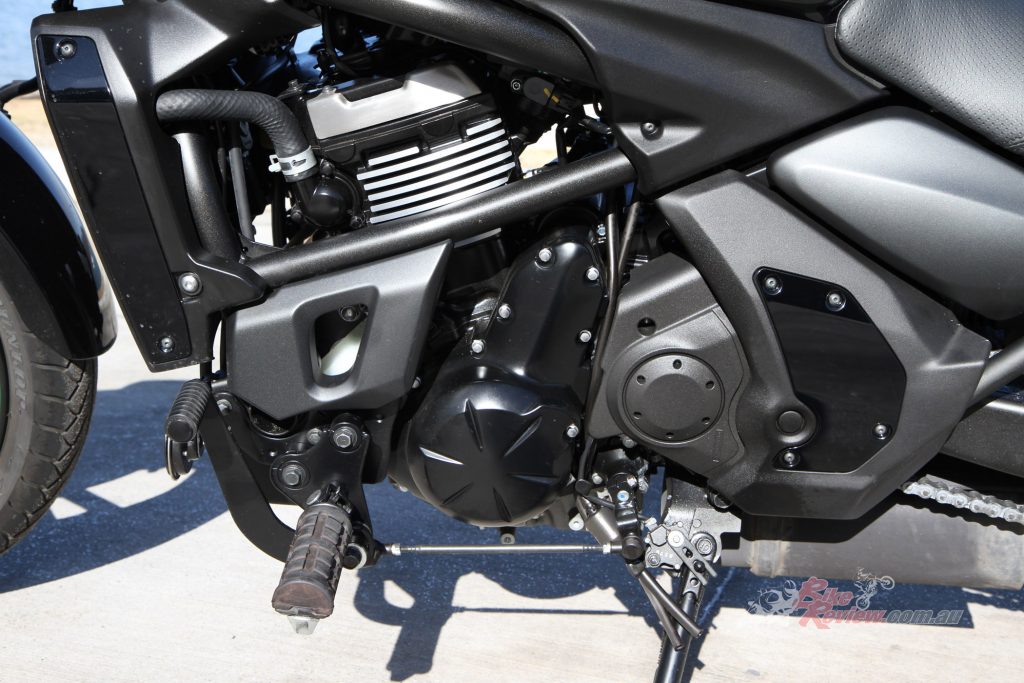
While the Vulcan comes standard with adjustable pegs, it requires alternate shifter linkage rods that are sold separately.
The Vulcan also has fully adjustable levers, which is a great feature and let me fine tune them to my liking. Not only that though, the pegs are three-way adjustable (however require alternate shift linkage rods that are sold separately) and a range of accessories are available from Kawasaki to tailor the riding position to the rider’s liking.
THE RIDE
At 183cm, I found that the standard riding position was perfect for me and is up there as one of the most comfortable bikes I have ridden. The mirrors also have plenty of vision on offer and are stable.
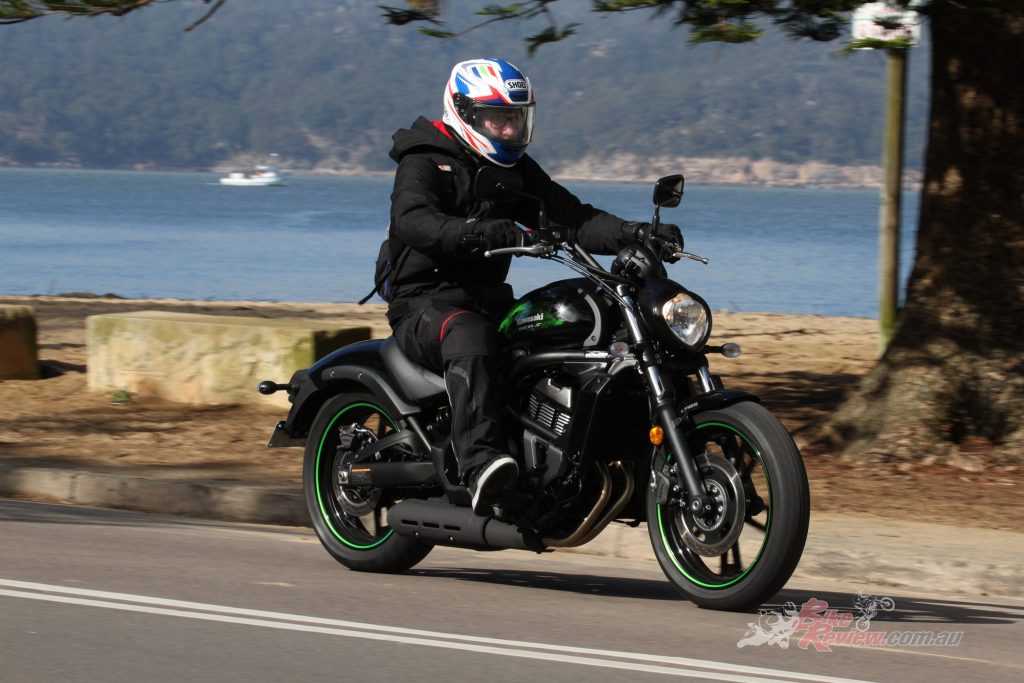
Comfort is that of a cruiser-standard; a very relaxed riding position which is great for commuting or touring.
But we knew this already. Of course it’s going to be comfortable – it’s a cruiser. What I’m more interested in is how it goes, because I’m under the belief the most cruisers are just slow and heavy. Well, heavy it may be – weighing in at 226kg wet – but slow it is not, producing 35kW of power and 53Nm of torque.
It’s not as fast as the Z650L or similarly displaced learner bikes, but it’s definitely close and short gearing helps it to make it feel really punchy down low. The exhaust note also has a sportsbike-like tone to it thanks to it’s high-revving nature, and it sounds bloody awesome. The clutch feels lightweight and positive, and the gearbox is good, however I found it never liked to fully shift into second easily especially on a quick take-off.
Backroad runs were almost miserable as I got constantly launched out of my seat at high speeds. But, if I was just cruising, and not trying to make it from A to B without regard for my personal safety, the experience was really pleasant. I enjoyed the smooth fuelling and easy handling when I just put it on the backburner, I could ride all day if I wanted to.
I actually don’t want to be too harsh on the Vulcan’s handling characteristics at speed, because to be honest it was actually a relatively easy and stable bike on smoother twisties. Although heavy, the weight is noticeable but is nothing more then a minor inconvenience, and even though there isn’t much lean angle, there is still a considerable amount for a cruiser and didn’t negatively impact me too much.
The suspension feels relatively firm, and also has preload adjustability. It’s good for the most part except for on some bumpy corners where it likes to stand up after going over a bump.
A big positive on the Vulcan S SE are the brakes, which allow for really confident and strong braking. A good amount of bite with good power will slow you down pretty quick and I didn’t have any issues with brake fade even on some more spirited rides. There isn’t much dive on the forks on the brakes, with a gradual-feeling turn into the corner using inputs from both the ‘pegs and ‘bars which it likes, and thanks to that good low-mid range power and torque, it makes for a speedy drive-out. The weight makes it considerably harder for quick line changing on the twisties, but it generally feels a lot sportier then your average cruiser.
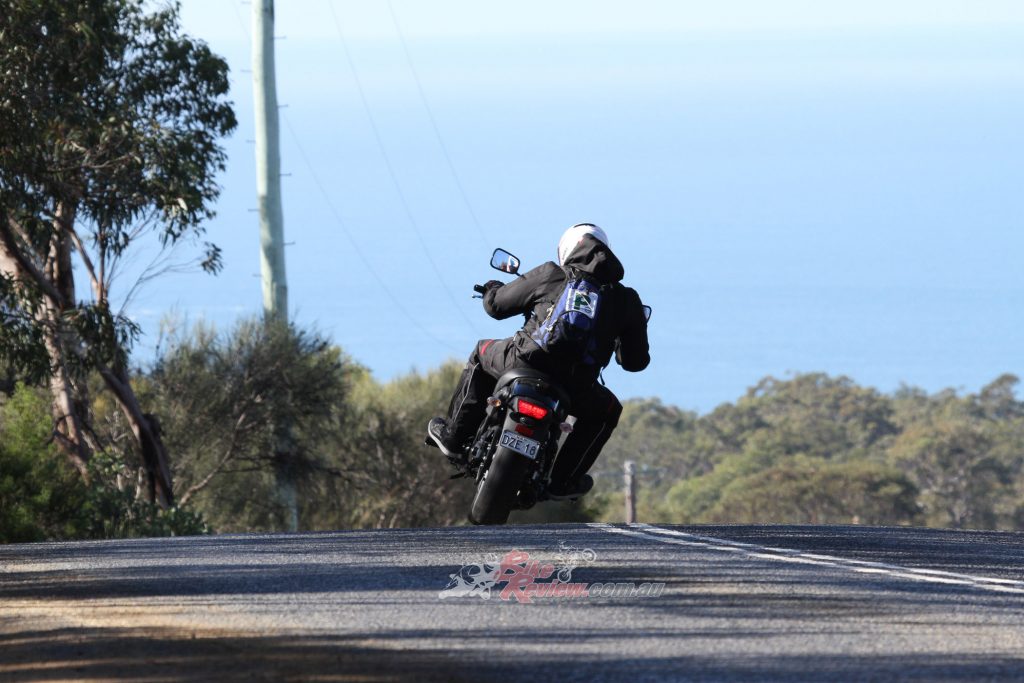
Utilising the low-mid range, riders can get a speedy drive out and get on the throttle nice and early into the exit.
The Dunlop Sportmax D220 ST tyres aren’t mentioned by Kawasaki in the press information however, the tyres performed really well on both dry and damp roads. They grip up nicely which is a comfort that both leaner and experienced riders will appreciate.
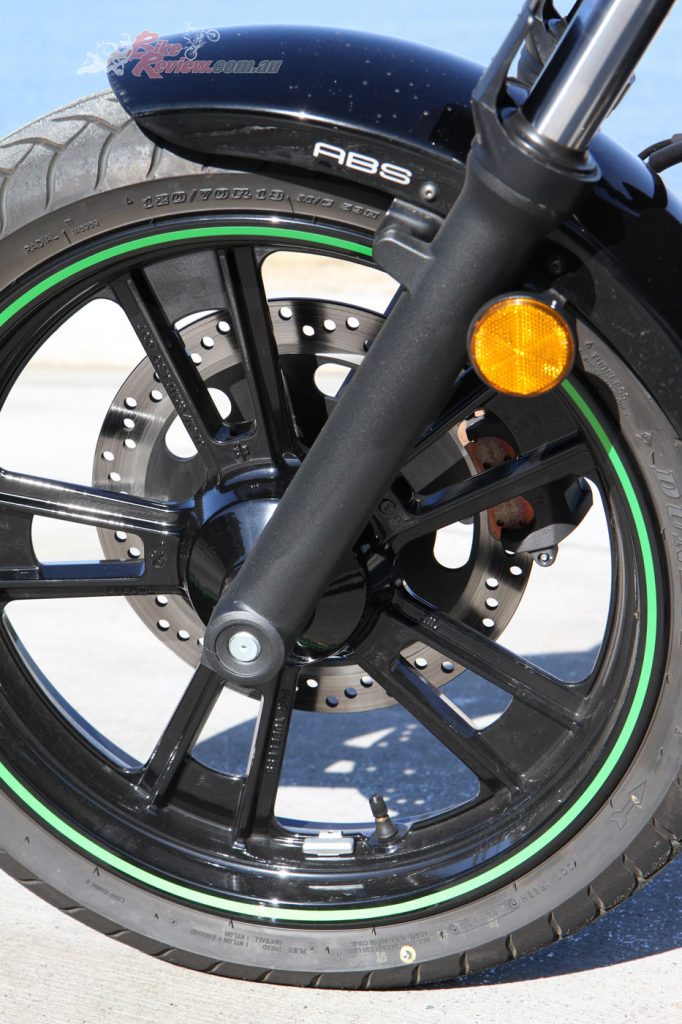
The Dunlop tyres do a good job in a range of conditions despite having no special mention from Kawasaki.
In terms of daily usability, I can’t think of a cooler rider to get about every day than this. The only negatives of using this as a daily machine might be the weight, size and thirstiness. The overall weight and size makes moving it around a bit of a pain in the ass, and also make lane filtering just a little bit harder. It also does 18.2km/L or 5.5L/100km, which is pretty thirsty for daily use, but Kawasaki have implemented an economical riding mode, which automatically turns on during cruisy riding.
A blue-screen LCD dash has the usual features; a digital speedometer, odometer, dual trip meters, a clock and an analogue tachometer, but it also has some nice-to-know features such as a digital gear position indicator, fuel consumption average and fuel range. Thanks to the blue backlight, it’s really easy to read in all lighting.
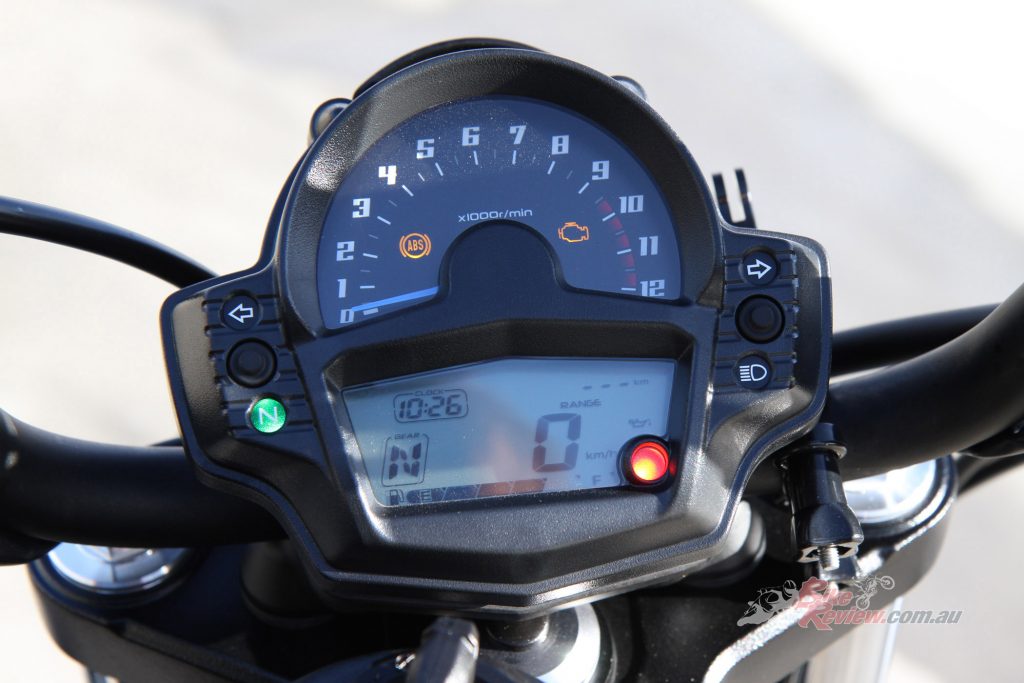
A simple LCD dash that looks the part, with blue backlighting for optimum visibility in a variety of lighting conditions.
You also have an LED taillight which is great for safety as it can be well-seen, and the halogen headlamp still offers plenty of vision at night. Security on the Vulcan S consists of a steering lock which is great considering it’s one of the first lines of defence against thieves. It sits very securely on it’s side stand, which is pretty easy to kick down too.
So, why exactly would you buy a Vulcan S SE? Well, you’re getting a bike with a really cool concept and awesome looks, and pretty good performance to match that, not to mention great comfort. It also has a tonne of genuine Kawasaki accessories, such as windshields, saddle bags, exhaust covers and more, for riders to customise their Vulcan S to their liking. So if you’re the rider who likes to customise their ride, then this is a really easy bike to do just that.
It’s also very inclusive, in that a large range of riders whether they be short or tall and still find this bike really easy to control and really comfortable. Even if you’re a sportsbike fanatic and find no interest in cruisers, the Vulcan has opened my mind to the idea that cruisers can be fun too!
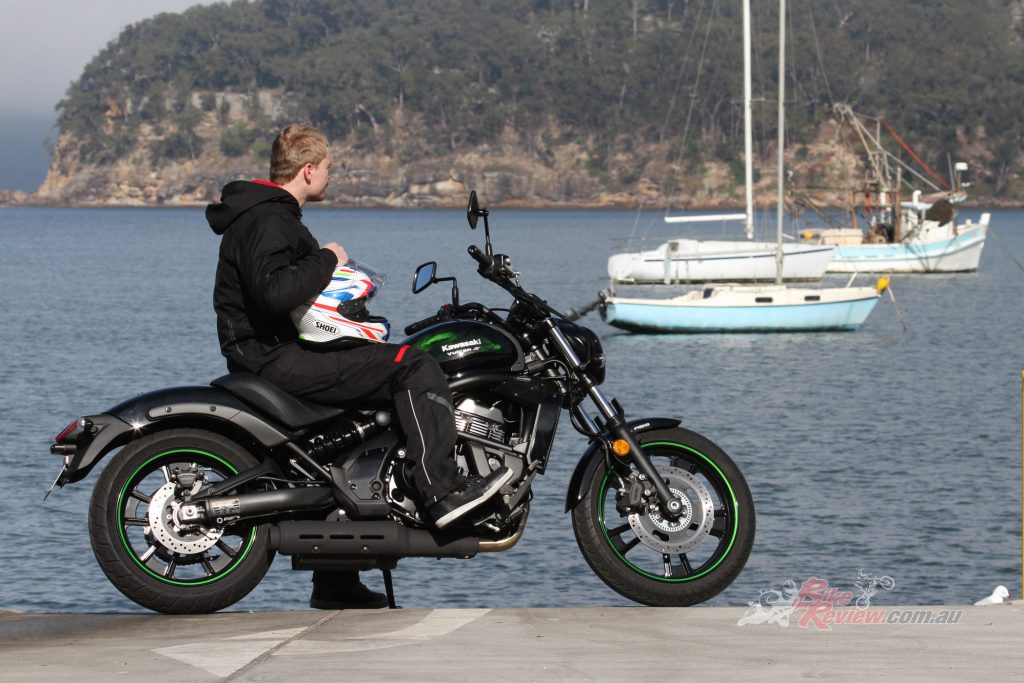
The 2020 Vulcan S SE starts at $10,199RRP exclusive of on-roads. Check the Kawasaki website for the R/A price.
You can pick up the Vulcan S SE from $10,199 excluding on roads, which I’d suggest is a pretty good price for what’s on offer, and even if you aren’t the cruiser type but looking for a good first motorcycle, or upgrading from a smaller one, then swing by your local Kawasaki dealer and try one out for yourself – it’s worth every second. In competition you’ll find the Benelli 502C, click here to read our full review!
2020 Kawasaki Vulcan S SE Tech Talk
The liquid-cooled, DOHC, eight-valve 649cc parallel twin with fuel injection is tuned to deliver smooth, responsive performance, especially in the low and medium rpm ranges. Kawasaki state the engine was tuned for rider-friendly power characteristics that will inspire confidence in new riders.
The triangular layout of the crankshaft and transmission shafts makes the engine very short front-to-back. Transmission input shaft, output shaft and change drum are contained in a “cassette”-style package that both allows a compact layout and facilitates transmission maintenance chores.
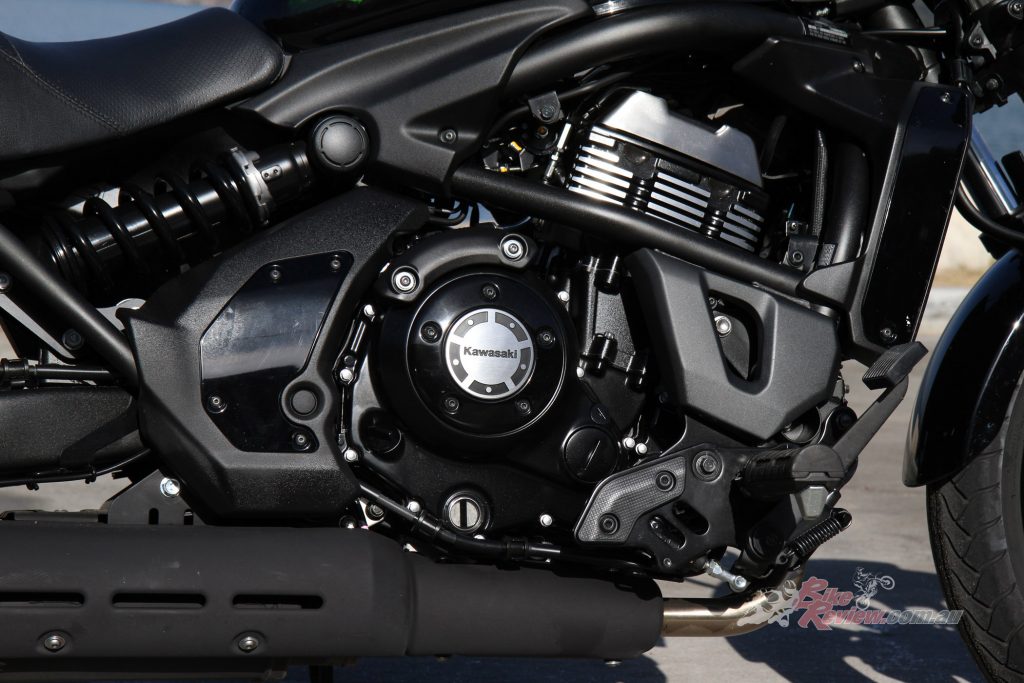
The liquid-cooled, DOHC, eight-valve 649 cc parallel twin s tuned to deliver smooth, responsive performance.
A semi-dry sump design reduces engine height. The plated, linerless cylinder is lightweight, and the narrow cylinder pitch reduces engine width. Under-engine muffler improves mass centralisation and lowers the bike’s centre of gravity.
Particular attention was paid to the intake ports and camshaft profiles, and long-type intake funnels result in strong low-mid rpm performance. Kawasaki says the large-bore 38mm throttle-bodies feature sub-throttles for high power output with smooth, sensitive throttle response. Crankshaft design includes a heavier flywheel mass.
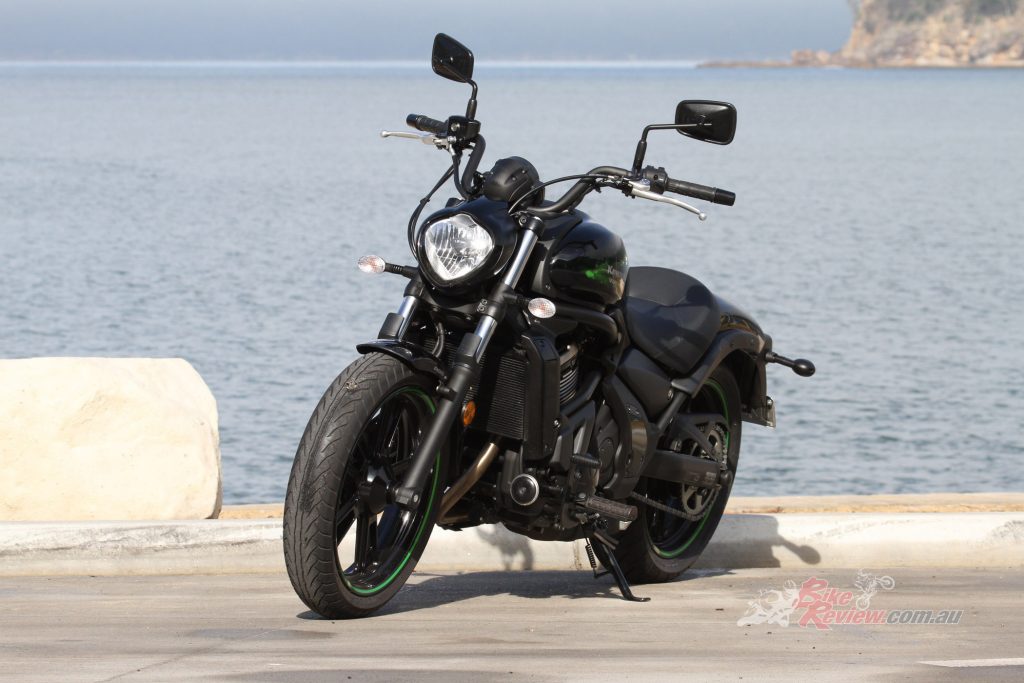
Curved, flowing style blended with a ‘powerful, long-and-low stance’ and modern elements creates a unique design.
An under-engine muffler design contributes to strong torque in the low-mid rpm range. Muffler internal construction and catalyser layout ensure clean emissions that will pass Euro4 regulations. Lightweight drive chain offers less mechanical loss and lower weight than a belt drive.
The compact engine allows use of a slim, minimalist frame, resulting in a design that is narrow at the knees and feet. 3D analysis was used to achieve the ideal stiffness balance for the frame. The frame is constructed of high-tensile steel, contributing to light weight. The layout of the offset single-shock rear suspension allows the battery to be located beside the shock instead of beneath it.
This arrangement allows a lower seat height as well as a slim design. As much as possible, the exhaust was kept under the engine, ensuring a slim chassis and an unobstructed reach to the ground.
Wheel sizes (18in for the front, 17in for the rear) are closer to those found on a sportsbike than a typical cruiser model (which often have much larger front wheels). The smaller front wheel contributes to the Vulcan S’s claimed natural, light handling.
A large 300mm front disc is slowed by a two-piston caliper, and at the rear, a 250mm disc is gripped by single-piston caliper. The compact ABS unit contributes to the lightweight chassis, and is conveniently tucked away under the rear shock, which ensures a slim construction beneath the seat.
A seat design with thick, 62mm padding offers a wide surface and excellent hip support, which Kawasaki say ensures ample comfort for city riding and short tours. The seat bracket is rubber-mounted, reducing vibration transferred through the seat.
Footpeg position is adjustable with three positions available: STD, 25mm forward, 25mm back (Alternate shift linkage rods, sold separately, are necessary when changing the position from standard.)
An accessory handlebar positions the handle grips 44mm closer to the rider. An accessory reduced-reach seat positions the rider 53mm closer to the tank and controls accommodates shorter riders. An accessory comfort seat offers a more spacious seating position for taller/larger riders. Brake and clutch levers can be adjusted to suit the rider’s hand size and preference.
Curved, flowing style blended with a ‘powerful, long-and-low stance’ and modern elements creates a unique, eye-catching design says Kawasaki. An inverted triangle headlamp contributes to the Vulcan S’s claimed fresh, unique design. A position lamp is built into the upper portion of the headlamp unit. A tear drop-style fuel tank aims to add a cruiser-style touch. The tail fender is shaped to hug the rear wheel as closely as possible. The design was made possible in part by the offset laydown rear shock.
A compact, stacked instrument cluster matches the bike’s overall design and features a claimed easy-to-read layout. Analogue-style tachometer and multi-function LCD screen use blue LED backlights designed for excellent visibility at night. Features include gear position indicator, fuel gauge, digital speedometer, clock, odometer, dual trip meters, remaining range, average/instant fuel consumption and the Economical Riding Indicator.
2020 Kawasaki Vulcan S SE Specifications
Price: $10,199 + ORC (click here and enter postcode for R/A price)
Claimed Power: 35kW[46.9hp]@6,600rpm
Claimed Torque: 53Nm[39.1lbs-ft]@5,600rpm
Wet Weight: 226kg
Fuel capacity: 14L
Engine: Liquid-cooled, four-stroke, DOHC, eight-valve parallel twin, 83mm x 60mm, 649cc, 10.8:1, electric start
Gearbox: Six-speed, return
Clutch: Wet, multi-disc
Chassis: Perimeter, high-tensile steel
Rake: 31°
Trail: 120mm
Suspension: 41mm telescopic fork, 130mm travel, offset laydown single-shock, linkage-
equipped, with adjustable preload, 80mm travel
Brakes: 300mm rotor (f), dual-piston caliper, 250mm rotor (r), single-piston caliper
Wheels & Tyres: Cast five-spoke ‘pairs’, 18in (f), 17in (r) , Dunlop Sportmax D220 ST tyres, 120/70 – 17 (f), 160/60 – 17 (r)
Dimensions
Wheelbase: 1,575mm
Seat height: 705mm
Ground clearance: 130mm
Overall width: 880mm
Overall Length: 2,310mm
Overall height: 1,100mm
Instruments: LCD dash
2020 Kawasaki Vulcan S SE Gallery
The Verdict | Review: 2020 Kawasaki Vulcan S SE, LAMS cruiser


